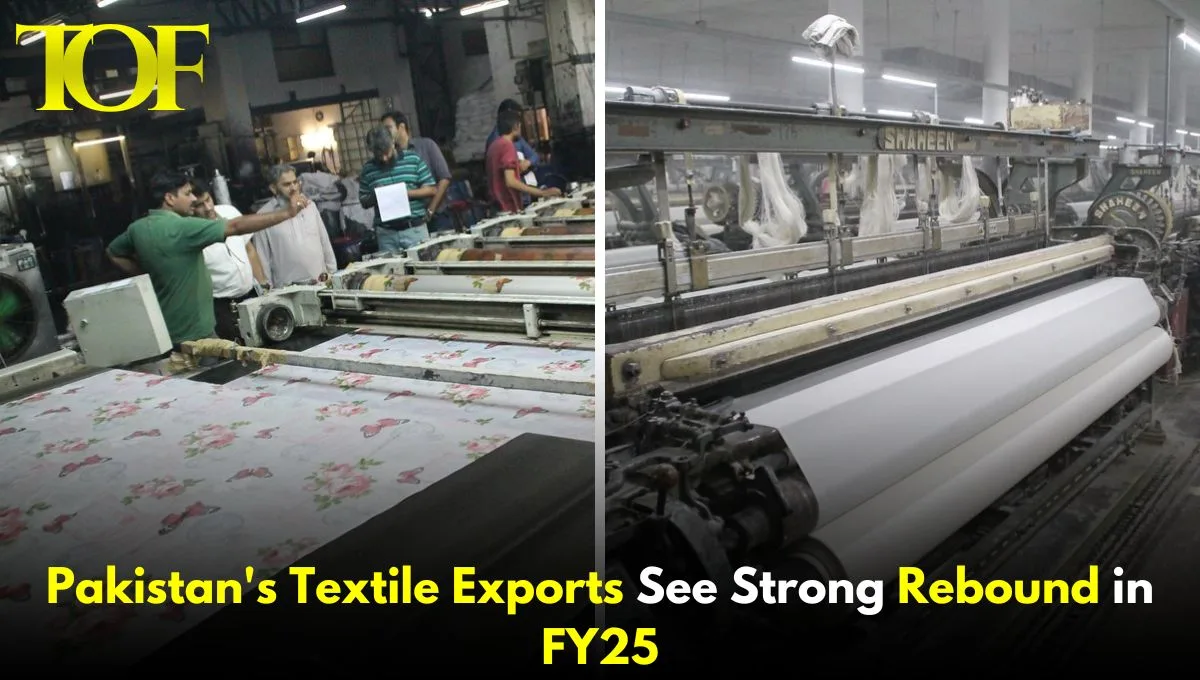During the first quarter of FY25, Pakistan’s textile exports increased by approximately 9.51%, as per PBS data. Despite concerns about a decline in the sector, the exports amounted to $4.52 billion from July to September, compared to $4.13 billion during the same period the previous year.
Following a comprehensive analysis of the expansion, the industry showed significant progress after experiencing a 3.09% decrease in exports in July. September saw a particularly noteworthy increase of 17.92%, while August witnessed a 13% rise. This favorable pattern is promising for the economy of Pakistan, especially given the unpredictable international demand for textiles and apparel from competing countries.
Indeed, part of the drivers in this recovery is the disruption to supply chains in Bangladesh, which saw a demand for Pakistani garments in international markets recover sharply. The overall recovery of this sector, mainly within textile and clothing, will be important, as these comprise a majority of Pakistan’s total exports.
The PBS’s latest data had the following recorded notable gains in various segments of the textile and clothing sector:
- Readymade Garments: Exports value growth registered an increase of 23.17% while exports volume grew by 16.16%.
- Knitwear: Value growth reported an increase of 14.13%, while quantity growth was registered at 2.17%.
- Bedwear: Value growth increased by 13.31% whereas the quantity growth was 14.55%
- Towels: Value growth by 7.04% and quantity growth by 5.32%
- Cotton Cloth: Value growth increased by 10.20% while the corresponding quantity growth reported was 3.43%.
While the total figure looks hopeful, certain industries still require focus. During the first quarter, yarn exports saw a significant drop of 48.45% compared to the previous year. This decrease highlights the difficulties faced by the spinning sector, including elevated production expenses and intensified competition.
Experts in the industry sound a note of caution that the industry remains plagued with several daunting challenges in terms of taxation and structural anomalies. The recent increase in tax rates on exporters’ personal incomes has already been termed as a vote of no confidence in the sector’s ability to remain competitive with the regional giants, India and China.
“While the increase in demand is positive, tough taxation measures are a big dampener in the growth of the industry,” said a senior textile exporter. He mentioned that despite having an installed capacity of $25 billion, the sector has been unable to utilize it fully due to fiscal limitations.
On the other hand, there was a 21.17% increase in raw cotton imports in Q1 FY25, possibly indicating increased efforts by local producers at the grassroots level to boost their production capacities and take advantage of the growing demand. Synthetic fiber as well as synthetic yarn imports continued with a negative growth of 19.65% and 5%, respectively, reflecting higher usage of natural fibers for clothing production.
The government of Pakistan has been taking aggressive initiatives toward the promotion of development in the textile sector. Apart from updating tax policies, efforts are being made to simplify the processes for export and to encourage investment by manufacturers through the latest technology. Such efforts would increase productivity, and the sector would regain competitiveness at the international level.
“The textile and clothing sector has been the backbone of Pakistan’s economic stability, and our focus lies in providing a friendly environment for sustainable growth,” said a ministry spokesperson of Commerce. The ministry has assured continued support for the sector to guide it through the current challenges and fortify new opportunities.
An increase in textiles exports has also been contributing to the total growth of export revenues for Pakistan. Total exports for the first quarter of FY25 jumped to $7.90 billion, compared with $6.90 billion in the same months last year with an increase of 14.61%. The trend indicates that pressure from economics alone is not strong enough to confine the trade sector of Pakistan from now beginning to shine.
Industry experts are hopeful that if the government is dealing with the real problems that challenge Pakistan’s textile industry, including infrastructure deficits and high energy costs, then perhaps a competitive advantage for this commodity in the global marketplace might be recovered.
Textile and clothing exports rebounding in Pakistan holds a hopeful sign for the economy, showing that the industry is coming back to life despite significant hurdles. As such competitors across the region face their challenges, Pakistan will need to capitalize over the next period on these opportunities to keep its growth momentum going. Support from the government and innovation by the industry will be the key factors in making sure this textile sector not only sustains itself but thrives in the years ahead.
To Read More: Finance


[…] About Pakistan’s Textile Exports […]